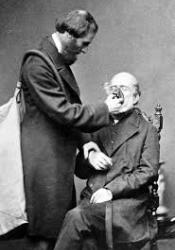Medical Hierarchy in Late 1800's
e class of doctors that commanded most prestige in 1800s was the physicians. They were not concerned with the external injuries, nor did they performed surgeries or set bones. Their work was mainly confined to check the pulse and urine of the patients. They were called the physicians because they only administered drugs or physic.
They were chiefly concerned with giving of drugs to the patients that came to them. Physicians comprised of a handful of practicing doctors during the Victorian era. A chunk of them was located in London, where it was comparatively easy to find the chunk of the patient population and also the chances of making wealth and social status. To practice as a physician in London, a license from Royal College of Physicians was required. This was a mandatory requirement.
During the Victorian era, there was no system of training by the medical schools. There were only a handful of hospitals that existed during the Victorian era. Many of the physicians believed that medicine ought to be taught by books and antiques. So even if there existed a large number of medical schools during the Victorian era, they wouldn’t have been successful.
After the physicians, came the surgeons in the medical hierarchy. Their work was to perform surgeries, cut open the chest, deal with fractures and everything that a physician could not perform. The class of surgeons did not command that much respect from the society as the physicians did.
Main reason for the same was that till 1745 they were formally linked with barbers and had to get bodies from the graveyard to learn how to perform surgeries. It was as a result of this difference in status, that the physicians were addressed as Dr. and surgeons as Mr.
The last in the medical hierarchy were the apothecary. They were the lowest class in the medical hierarchy. They were the people who initially made the prescription form for the physicians but in the absence of the physicians, they also used to advise the patients. See

